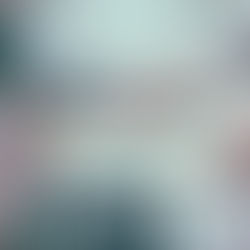Your Essential Guide to Sourcing the Perfect Print

Having brilliant marketing literature to hand is a winning way to portray the professionalism of your business. But, great design doesn’t end at the designer. Next time someone hands you a brochure, consider the feel of the card, the vibrancy of the colour, the weight of the material and the subtlety of the bind. If you want your literature to leave your customers in awe, you need to know your choices. To that end, we’ve put together a few tips to help you find print perfection...
Know your options
Sending artwork to print may seem like a simple task. That is, until the printer starts to ask questions. Does it include the specified crop marks and bleeds? Have you considered the gsm, stock and finish? What kind of binding do you want and would you like spot UV, embossing or spot foil?
If you want the finish of your brochure, booklet or poster to be just right, you have to understand your options. Let’s backtrack...
Stock up with the right paper
Paper’s just paper, right? If only life was that simple.
To confuse matters, we printers call paper (or card) ‘stock’. There are lots of different types of stock to consider and it’s important to choose carefully. What you go for depends on both your budget and how you would like your literature to be received. Here are your basic options:
Silk: a bright surface with excellent colour results and text legibility.
Matte: similar to silk, though with a slightly more subtle tone.
Glossy: designed to make printed photos look sharp and vibrant.
There are many other types of stock, like linen, nouveau and vintage - and you use more than one in a single print job. Why not choose a quality stock on the cover pages and something more cost-effective on the inners to get the look you want at a price you can afford.
It’s not thickness, it’s weight
Another important factor to consider is the thickness, or weight of your stock. This is measured in gsm (grammes per square metre). Generally, anything between 90 and 120gsm is used for magazines and books, whereas a flyer or brochure could be 150-280gsm. 200-250gsm is ideal for magazines and booklet covers and 280-350gsm is suitable for heavier book covers.
Binding doesn’t have to be a bind
Have you thought about binding? This depends on the amount of pages you want to bind, There are many different ways to bind: tape bound, screw bound, spiral bound and many more, so it’s best to understand your printer’s capacities before choosing.
It’s important to keep your binding in keeping with the design of your materials. If you want a modern, low-cost brochure, a neat saddle stitch option (think staples down the middle) would be a good choice. Whereas a professional catalogue may require perfect binding - a thermal binding option that hides the glue.
Types of print
Did you know there are numerous ways you can print materials, all with different finishing outcomes? Here at LG Davis we offer 3 different types of printing: digital printing, lithographic printing and variable data printing.
The difference between digital printing and traditional methods is that there is no need to replace printing plates. This results in quicker turnaround time and lower cost when using digital printing. The most popular methods include inkjet or laser printers.
Lithographic printing is used for larger runs with super quality and at affordable prices. And lastly, variable data printing is used for cross-media marketing such as letters, leaflets and brochures. This way of printing allows us to run highly responsive marketing campaigns, targeting individual customers with messages and images that apply specifically to them.
A touch of pizzazz
If you really want your marketing literature to stand out, try an exciting finishing option. Some companies use a spot colour to make sure that their brand is exactly the right colour every time it goes to print. You can also use spot UV colours high clear varnish that goes over the top Highly vibrant, these colours really pop, especially when set against a subtle matt background.
Want to go a step further? Try an embossed finish on heavy card, which gives the design a textured feel and 3D appearance. Or if you want to dazzle your customer with your ingenuity, ask about spot foil. This technique prints metallic foil with brilliant intricacy, but be prepared to pay for it!
Hopefully you now have a better understanding of the options available to you and how you can get that perfect finish. But, if you do have a question, we’d be happy to help. Give us a call now on 0121 430 900 to float your ideas and get some expert feedback. And remember – never settle for anything less than perfect print.
























